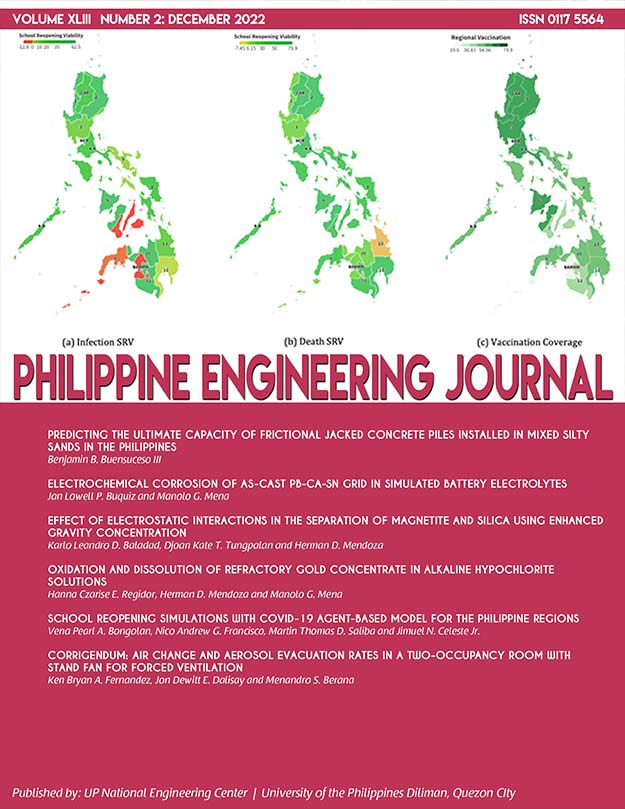Electrochemical Corrosion of as-cast Pb-Ca-Sn Grid in Simulated Battery Electrolytes
Abstract
Pb-Ca-Sn alloys are one of the primary materials for the positive grids of automotive batteries. Despite the various developments in the properties of such alloys, positive grid corrosion remains to be one of the leading causes of battery failure. The study aims to determine the corrosion behavior of various parts of an as-cast Pb-Ca-Sn alloy used in service to provide insights on improving grid design and casting conditions. Experiments were carried out using Pb-Ca-Sn grids taken from the production line of a battery manufacturing plant. Two grid locations, A and B, were used to compare the difference in cooling rates during manufacturing. The chemical composition and microstructure of each grid location were characterized. Electrochemical Impedance Spectroscopy (EIS) plots, equivalent circuit analysis, and potentiodynamic polarization curves were used to evaluate electrochemical behavior at various test conditions. Chemical analysis showed that the composition of each grid location is similar. Photomicrographs illustrated that the microstructures are characterized by cellular structures consisting of the Pb-rich α phase with eutectic mixtures on the intercellular boundaries. Moreover, grain and cellular sizes are larger in A than in B. EIS results showed that the RCT decreased as the working temperature increased. The decrease in RCT may be associated with the reduction of active porous sites due to the formation of a more compact PbSO4 layer. On the other hand, the RP increased as the acid concentration and temperature increased for both grid locations. Furthermore, the RP values at B are higher than in A. RP increase may also be associated with the formation of a thicker passivating corrosion layer, suggesting faster corrosion rates at location B. The higher corrosion rates in B may be attributed to its finer grain size and cellular size. Polarization curves also showed that the RP increased with temperature increase.
Keywords: corrosion, EIS, lead-acid batteries, lead alloys, microstructure


